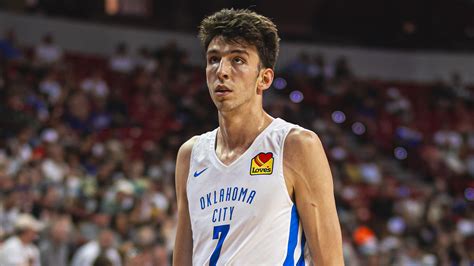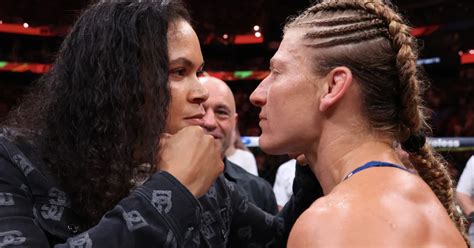
A new archetype is emerging in the NBA, and teams aspiring to championship glory may need to find their own version of Chet Holmgren. The unique blend of size, skill, and versatility that Holmgren embodies is becoming increasingly vital for success in the modern NBA.
The Chet Code: Is the Holmgren Type Player the Key to NBA Championship Success?
The Oklahoma City Thunder’s Chet Holmgren is redefining the modern NBA center. With his rare combination of height, agility, shooting touch, and rim protection, Holmgren represents a new archetype that many believe will be crucial for teams vying for championships in the coming years. The 2024-25 season will be a litmus test for this theory. As NBA teams continue to evolve and adapt, the demand for players who can excel in multiple facets of the game is higher than ever. Holmgren’s skill set, often compared to a unicorn, embodies this trend, prompting the question: is a player of his type now a prerequisite for hoisting the Larry O’Brien trophy?
The modern NBA game has transitioned from a league dominated by traditional, back-to-the-basket centers to a more fluid, positionless style of play. This shift has been driven by several factors, including the increased emphasis on three-point shooting, the rise of skilled ball-handling big men, and the desire for greater versatility on both ends of the court. Holmgren, at 7-foot-1, epitomizes this evolution. He possesses the size and length to protect the rim effectively, averaging 2.5 blocks per game in his rookie season. But what truly sets him apart is his offensive repertoire. Holmgren can stretch the floor with his reliable three-point shot, handle the ball in transition, and create scoring opportunities for himself and his teammates.
This versatility makes him a nightmare matchup for opposing defenses. Traditional centers struggle to guard him on the perimeter, while smaller defenders are overmatched by his size and skill around the basket. “Want to win a championship in the NBA? Your team might need a Chet Holmgren,” as suggested by various NBA analysts. Holmgren’s impact extends beyond the box score. His presence on the court opens up spacing for his teammates, allowing for more efficient offensive execution. Defensively, his ability to switch onto smaller players and protect the rim provides his team with tremendous flexibility.
The success of teams like the Denver Nuggets, led by the versatile Nikola Jokic, has further validated the importance of having a skilled, multifaceted big man. Jokic, a two-time MVP, has demonstrated the ability to dominate games as a scorer, rebounder, and playmaker. Holmgren, while still early in his career, possesses many of the same qualities that make Jokic such a unique and valuable player. The rise of players like Kristaps Porzingis, another 7-footer with a reliable outside shot and rim-protecting abilities, further underscores this trend.
However, Holmgren’s path to success has not been without its challenges. After being drafted second overall by the Oklahoma City Thunder in 2022, he missed his entire rookie season due to a Lisfranc injury in his right foot. This setback raised questions about his durability and ability to withstand the physical demands of the NBA. However, Holmgren has responded emphatically, showcasing his talent and resilience in his debut season. He quickly established himself as a key contributor for the Thunder, helping them become one of the most exciting and promising young teams in the league.
The Thunder’s decision to pair Holmgren with Shai Gilgeous-Alexander, an All-Star point guard, and Jalen Williams, a versatile wing player, has created a dynamic and balanced offensive attack. Gilgeous-Alexander’s ability to penetrate the defense and create scoring opportunities for himself and his teammates complements Holmgren’s outside shooting and inside presence. Williams’ versatility allows him to play multiple positions and contribute in a variety of ways. Together, they form a formidable trio that has the potential to compete for championships in the years to come.
The question remains, however, whether a “Holmgren-type” player is truly essential for championship contention. Some argue that other archetypes, such as dominant perimeter scorers or elite defensive stoppers, can also lead teams to success. The Golden State Warriors, for example, won multiple championships with a core of Stephen Curry, Klay Thompson, and Draymond Green, none of whom fit the traditional mold of a dominant big man.
However, the Warriors’ success was predicated on their unique combination of shooting, ball movement, and defensive versatility. Green, while not a traditional scorer, provided invaluable rim protection, playmaking, and defensive leadership. In today’s NBA, teams need to find an edge, some differentiating factor that separates them from the pack. For many, that edge might just be a player who can do it all, a player like Chet Holmgren.
Ultimately, the importance of a “Holmgren-type” player will depend on the specific context of each team and the overall landscape of the league. However, the trend towards versatility and skill in the frontcourt is undeniable. Teams that can find and develop players who possess a similar skill set to Holmgren will undoubtedly be better positioned to compete for championships in the modern NBA. The Thunder’s progress will be closely monitored as they seek to validate this theory and prove that Holmgren is indeed the prototype for future NBA champions.
Beyond Holmgren, other young players in the league are exhibiting traits that align with this evolving archetype. Players like Evan Mobley of the Cleveland Cavaliers and Victor Wembanyama of the San Antonio Spurs are showcasing similar combinations of size, skill, and versatility. Mobley, a gifted defender and passer, has quickly become a key piece for the Cavaliers. Wembanyama, with his unprecedented combination of size, shooting, and ball-handling ability, has the potential to become a transcendent superstar.
The emergence of these players suggests that the “Holmgren-type” player is not just a fleeting trend, but rather a fundamental shift in the way teams are evaluating and developing talent. As the NBA continues to evolve, the demand for players who can excel in multiple facets of the game will only continue to grow. The ability to shoot, pass, dribble, defend, and protect the rim is becoming increasingly essential for success in the modern NBA.
However, it’s also important to acknowledge that no two players are exactly alike. While Holmgren, Mobley, and Wembanyama share certain similarities, they also possess unique strengths and weaknesses. Each player will need to develop their own individual style of play and adapt their skills to the specific needs of their team.
For example, Holmgren’s offensive game is more polished than Mobley’s at this stage of their careers. He is a more reliable shooter from beyond the arc and is more comfortable creating his own shot off the dribble. Mobley, on the other hand, is a more instinctive defender and rebounder. He has a knack for being in the right place at the right time and is able to impact the game with his athleticism and energy. Wembanyama’s ceiling is arguably the highest of the three, given his unparalleled combination of size and skill. However, he is still raw and needs to develop his strength and consistency before he can reach his full potential.
The development of these players will be closely watched by NBA teams and analysts alike. Their success or failure will provide valuable insights into the evolving landscape of the league and the importance of different player archetypes. As the NBA continues to prioritize versatility and skill, teams will be looking for players who can contribute in multiple ways and adapt to different roles. The “Holmgren-type” player represents a significant step in this direction, but it remains to be seen whether it will ultimately become the defining characteristic of championship-caliber teams.
The impact of coaching and team strategy also cannot be overstated. Even the most talented player needs to be placed in the right system and surrounded by the right teammates to maximize their potential. The Oklahoma City Thunder’s success in developing Holmgren is a testament to their coaching staff’s ability to identify and cultivate talent. Coach Mark Daigneault has created an environment where young players can thrive and develop their skills.
The Thunder’s commitment to player development extends beyond the court. They have invested heavily in state-of-the-art training facilities and provide their players with access to top-notch medical care and performance coaching. This holistic approach to player development has been instrumental in Holmgren’s success. The San Antonio Spurs are hoping for similar results with Wembanyama, relying on their established history of developing international talent and creating a winning culture.
In conclusion, the emergence of Chet Holmgren as a versatile, two-way force in the NBA has sparked a debate about the importance of his archetype for championship contention. While it remains to be seen whether a “Holmgren-type” player is truly essential for success, the trend towards versatility and skill in the frontcourt is undeniable. Teams that can find and develop players who possess a similar skill set to Holmgren will undoubtedly be better positioned to compete in the modern NBA. The Oklahoma City Thunder’s progress will be closely monitored as they seek to validate this theory and prove that Holmgren is indeed the prototype for future NBA champions. The future of the NBA may well hinge on the evolution and proliferation of players who can seamlessly blend size, skill, and versatility. Only time will tell if the “Chet Code” unlocks the secret to championship success.
Frequently Asked Questions (FAQ)
1. What is the “Chet Code” mentioned in the article?
The “Chet Code” refers to the idea that teams need a player with a similar skill set to Chet Holmgren – a combination of size, versatility, shooting ability, and rim protection – to win an NBA championship in the modern NBA.
2. What makes Chet Holmgren a unique player?
Holmgren’s uniqueness stems from his ability to blend traditionally distinct skill sets. At 7-foot-1, he possesses the size and length of a center, but also the shooting touch of a guard, allowing him to stretch the floor. He can also handle the ball, create his own shot, and protect the rim, making him a versatile player on both ends of the court.
3. Are there other players in the NBA who fit the “Holmgren-type” archetype?
Yes, the article mentions Evan Mobley of the Cleveland Cavaliers and Victor Wembanyama of the San Antonio Spurs as other young players who exhibit traits similar to Holmgren, showcasing combinations of size, skill, and versatility. Kristaps Porzingis is also mentioned as an example of a player who embodies a similar archetype.
4. Did Chet Holmgren face any challenges early in his NBA career?
Yes, Holmgren missed his entire rookie season due to a Lisfranc injury in his right foot, raising concerns about his durability. However, he has since recovered and become a key contributor for the Oklahoma City Thunder.
5. Is having a “Holmgren-type” player the only way to win a championship in the NBA?
The article argues that while the trend towards versatility and skill in the frontcourt is undeniable, it’s not the only path to success. Teams like the Golden State Warriors, with a core of Stephen Curry, Klay Thompson, and Draymond Green, have won championships with different player archetypes, emphasizing the importance of team chemistry, coaching, and overall strategy.
Expanded Analysis and Context
The central argument of the article revolves around the evolving demands of the NBA and how those demands might now necessitate a specific type of player to compete for a championship. This argument is built upon several key factors: the changing style of play, the success of versatile big men, and the unique skill set that Chet Holmgren brings to the court.
The shift in the NBA’s style of play from a predominantly inside game to a more perimeter-oriented one has been a gradual but significant transformation. This change has been driven by several factors, including advancements in training methodologies, the increased emphasis on analytics, and the growing popularity of three-point shooting. As teams have become more adept at spacing the floor and creating open looks from beyond the arc, the value of players who can both shoot and defend has increased dramatically.
The success of players like Nikola Jokic, a two-time MVP, has further validated the importance of having a versatile big man. Jokic’s ability to score, rebound, and pass at an elite level has made him one of the most dominant players in the league. His success has inspired other teams to search for players who can replicate his impact, even if only to a lesser degree. Jokic provides the blueprint.
Holmgren’s skill set is particularly intriguing because it combines elements of both traditional and modern basketball. He possesses the size and length to protect the rim and rebound effectively, but he also has the shooting touch and ball-handling skills of a guard. This combination of skills makes him a difficult matchup for opposing defenses, as he can score in a variety of ways and create opportunities for his teammates. His presence on the court forces defenses to make difficult choices, opening up opportunities for other players.
The article also touches on the challenges that Holmgren has faced in his career. His injury setback served as a reminder of the physical demands of the NBA and the importance of staying healthy. However, his ability to bounce back from the injury and establish himself as a key contributor for the Thunder is a testament to his resilience and determination. It also shows that simply possessing the physical tools to play at a high level is not enough. Players must also have the mental fortitude to overcome adversity and continue to improve their game.
The Oklahoma City Thunder’s decision to build around Holmgren, Shai Gilgeous-Alexander, and Jalen Williams is a bold move that reflects their belief in the importance of versatility and skill. Gilgeous-Alexander is an elite scorer and playmaker, while Williams is a versatile wing player who can contribute in a variety of ways. Together, they form a dynamic trio that has the potential to compete for championships in the years to come. Their success will depend on their ability to continue to develop their skills and build chemistry as a team.
However, the article also acknowledges that there are other paths to success in the NBA. The Golden State Warriors, for example, won multiple championships with a core of Stephen Curry, Klay Thompson, and Draymond Green, none of whom fit the traditional mold of a dominant big man. The Warriors’ success was predicated on their unique combination of shooting, ball movement, and defensive versatility. This shows that there is no single formula for winning a championship and that teams can find success by building around different player archetypes.
Ultimately, the importance of a “Holmgren-type” player will depend on the specific context of each team and the overall landscape of the league. Teams that are able to find and develop players who possess a similar skill set to Holmgren will undoubtedly be better positioned to compete for championships in the modern NBA. However, it is also important to remember that other factors, such as coaching, team chemistry, and overall strategy, also play a crucial role in determining success.
The emergence of other young players like Evan Mobley and Victor Wembanyama further underscores the trend towards versatility and skill in the frontcourt. Mobley is a gifted defender and passer, while Wembanyama has the potential to become a transcendent superstar. These players represent the future of the NBA and highlight the importance of finding and developing players who can excel in multiple facets of the game.
The article concludes by emphasizing that the “Chet Code” is not necessarily a guarantee of success, but rather a reflection of the evolving demands of the NBA. As the league continues to prioritize versatility and skill, teams will be looking for players who can contribute in multiple ways and adapt to different roles. The “Holmgren-type” player represents a significant step in this direction, but it remains to be seen whether it will ultimately become the defining characteristic of championship-caliber teams. The future of the NBA may well hinge on the evolution and proliferation of players who can seamlessly blend size, skill, and versatility. Only time will tell if the “Chet Code” unlocks the secret to championship success.
Deeper Dive into Player Comparisons
To further understand the “Holmgren-type” player, it’s useful to compare Holmgren, Mobley, and Wembanyama in more detail, considering their strengths, weaknesses, and developmental trajectories.
-
Chet Holmgren: Holmgren’s strength lies in his polished offensive game and his ability to impact both ends of the court. He is a reliable three-point shooter, comfortable creating his own shot, and a skilled passer. Defensively, he is a solid rim protector and can switch onto smaller players. His weakness might be his relatively slender frame, which could make him vulnerable against stronger centers. His development will focus on adding strength and refining his post game.
-
Evan Mobley: Mobley’s strengths are primarily on the defensive end. He is an instinctive defender with excellent timing and athleticism. He is also a skilled passer and rebounder. Offensively, he is still developing his shooting touch and his ability to create his own shot. His weakness might be his lack of offensive assertiveness at times. His development will focus on expanding his offensive repertoire and becoming a more consistent scorer.
-
Victor Wembanyama: Wembanyama’s potential is arguably the highest of the three, due to his unprecedented combination of size and skill. He can shoot, dribble, pass, and protect the rim at an elite level. His weakness is his relative lack of strength and experience. His development will focus on adding strength, refining his skills, and learning the nuances of the NBA game. He also needs to improve his decision-making and consistency.
The coaching staff and organizational structure of each player’s team will play a crucial role in their development. The Thunder have demonstrated a strong commitment to player development, which has been instrumental in Holmgren’s success. The Cavaliers have built a strong team around Mobley, providing him with opportunities to learn and grow. The Spurs have a long history of developing international talent and creating a winning culture, which should benefit Wembanyama.
The success of these players will also depend on their ability to adapt to the evolving demands of the NBA. As the league continues to prioritize versatility and skill, they will need to continue to develop their games and find new ways to contribute to their teams. The “Holmgren-type” player represents a significant step in this direction, but it is ultimately up to each individual player to realize their full potential.
The Role of Team Building and Coaching
The article correctly points out that possessing a Holmgren-esque player isn’t a magic bullet. Team building and coaching are paramount. Even the most talented player requires the right environment and supporting cast to flourish. This involves several key components:
-
Strategic Fit: The “Holmgren-type” player needs to fit within the team’s overall offensive and defensive schemes. Their versatility should complement the strengths of their teammates and exploit the weaknesses of their opponents.
-
Complementary Skills: Surrounding the versatile big man with players who excel in other areas is crucial. Elite perimeter scorers, defensive specialists, and playmakers can create a balanced and potent team.
-
Coaching Expertise: Coaches must be able to effectively utilize the unique skill set of the “Holmgren-type” player. This involves designing offensive plays that showcase their versatility and defensive strategies that maximize their impact.
-
Development Program: A strong player development program is essential for nurturing the potential of young players. This includes providing them with access to top-notch training facilities, experienced coaches, and personalized development plans.
The Oklahoma City Thunder’s success in developing Holmgren is a testament to their commitment to these principles. They have created a supportive environment where young players can thrive and develop their skills. Their coaching staff has been instrumental in helping Holmgren reach his full potential.
The San Antonio Spurs are hoping to replicate this success with Wembanyama. Their long history of developing international talent and creating a winning culture gives them a strong foundation to build upon. However, they will need to be patient and provide Wembanyama with the time and resources he needs to develop his game.
The Future of the NBA: Positionless Basketball
The emergence of the “Holmgren-type” player is part of a broader trend towards positionless basketball in the NBA. Teams are increasingly looking for players who can play multiple positions and contribute in a variety of ways. This trend is driven by the desire for greater versatility and flexibility on both ends of the court.
Positionless basketball allows teams to create more difficult matchups for their opponents and to adapt to different game situations more easily. It also allows them to utilize their players more effectively and to maximize their potential.
The “Holmgren-type” player is a perfect example of this trend. Their ability to shoot, dribble, pass, defend, and protect the rim makes them valuable assets in any system. As the NBA continues to evolve, the demand for players who can excel in multiple facets of the game will only continue to grow.
The ultimate success of the “Chet Code” will depend on whether teams can effectively integrate these versatile players into their overall strategies and build teams that are capable of competing for championships. While the individual talent is undeniable, the ability to create a cohesive and well-balanced team will ultimately determine whether the “Holmgren-type” player becomes the key to NBA success.
In conclusion, the idea of the “Chet Code” highlights an evolving paradigm in basketball where the traditional positional constraints are becoming increasingly blurred. The premium on versatility, multi-faceted skillsets, and adaptability are defining the modern NBA landscape, and players who embody these qualities are likely to shape the future of the league. While not a guaranteed path to victory, embracing this trend could prove to be a significant competitive advantage for teams striving for championship glory.









